Little, Brown & Co. (Boston, US)
Series dates: 1911-1912
Size: 7.75″ x 5.75″

The Burlington Library was a relatively inexpensive illustrated series of classics sold by Little, Brown in the U.S. and the U.K., with seven titles issued in 1911 and 1912. The books were printed in London.
The Dial (vol. 51, 1911, here) indicated that the “first titles” were Cranford, The Vicar of Wakefield, Essays of Elia, Tale of Two Cities, and Imitation of Christ.

Book News Monthly (vol. 30, 1911, here) shared the same news:
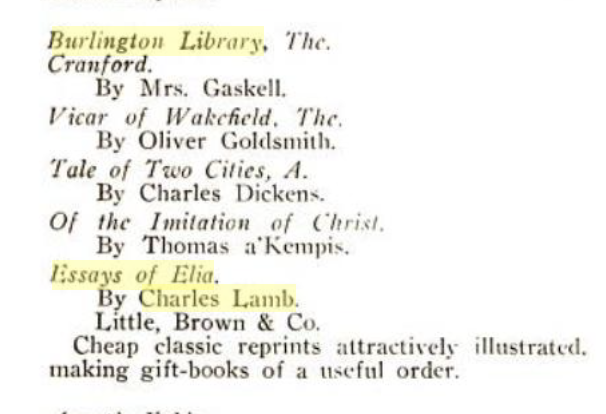
The Dial (vol 53, 1912, here) announced two new titles in the Burlington Library: titles by Keats and Kingsley:
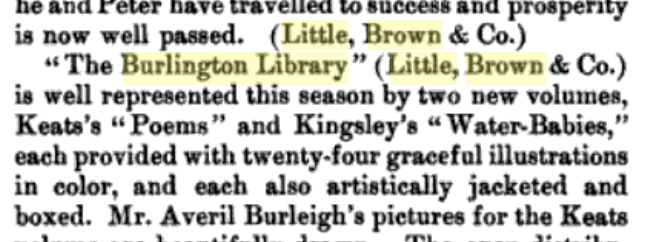
The Independent (vol. 74, 1913, here) announced only The Poems of John Keats:
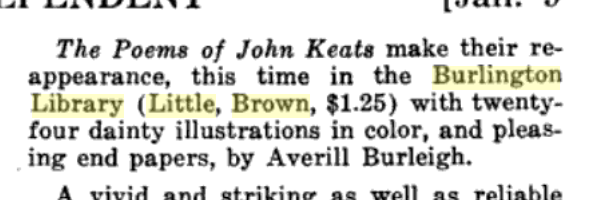
The books seem to lack dates or have incorrect dates in sources such as WorldCat. According to the sources above, the years of first issue are:
1911
Cranford, by Elizabeth Cleghorn Gaskell; illustrated by Evelyn Paul
The Essays of Elia, by Charles Lamb; illustrated by Margaret Jameson
The Vicar of Wakefield, by Oliver Goldsmith; illustrated by Sybil Tawse
A Tale of Two Cities, by Charles Dickens; illustrated by Sep E. Scott
Of the Imitation of Christ, by Thomas A Kempis
1912
The Poems of John Keats, by John Keats; illustrated by Averil Burleigh
The Water Babies, by Charles Kingsley; illustrated by Ethel F. Everett*
* Issued in a box, according to some contemporary sources
Goldsmith’s The Vicar of Wakefield was one of the initial titles published in the series, in 1911. Jackets for the Burlington Library series were unique to each title but used a common basic design (with varying title, author, illustrator) upon which a color illustration was glued. The price is included on the jacket spine. The front jacket flap is blank.
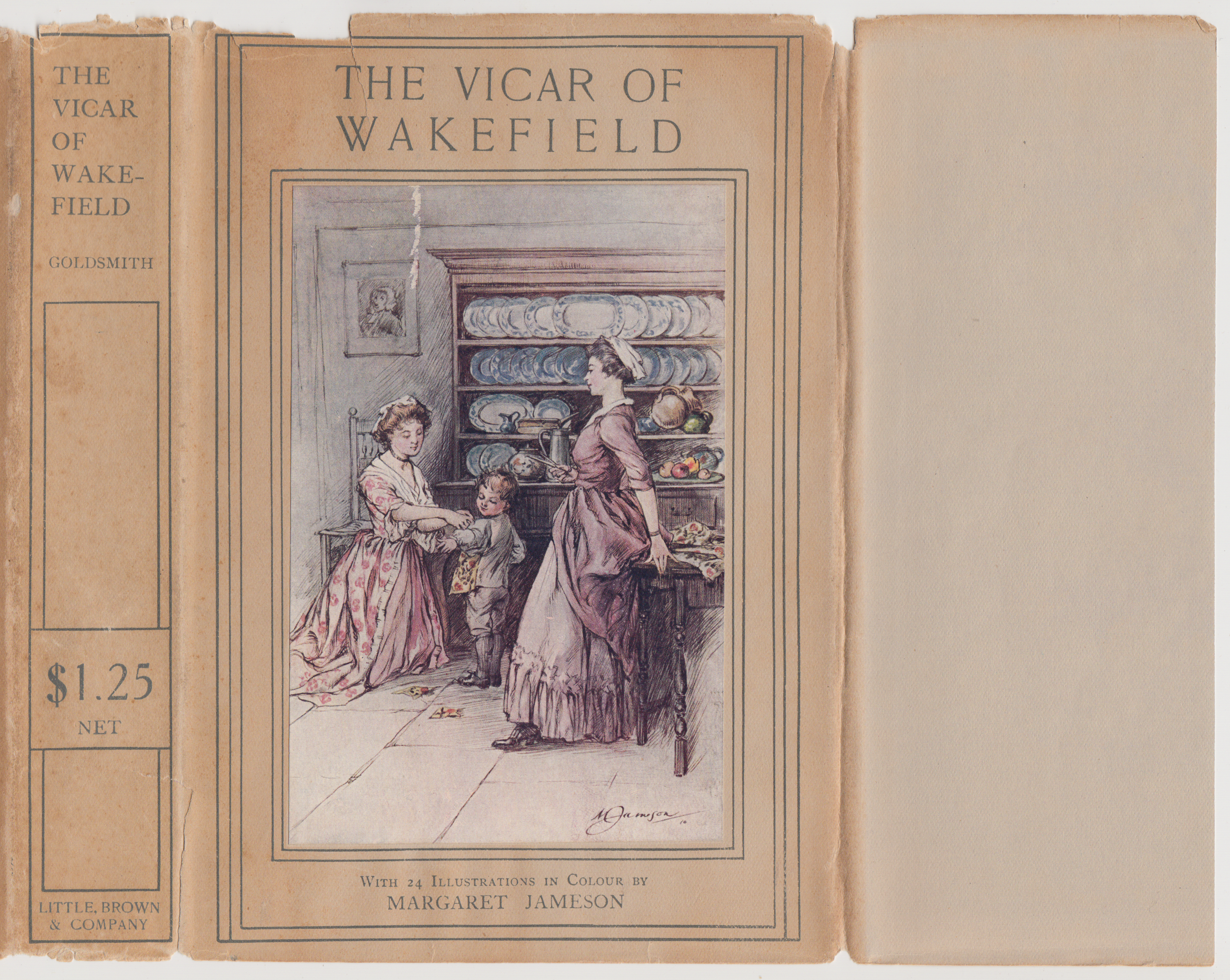
The series name is indicated on the back of the jacket, along with a list of the first five titles all issued in 1911.
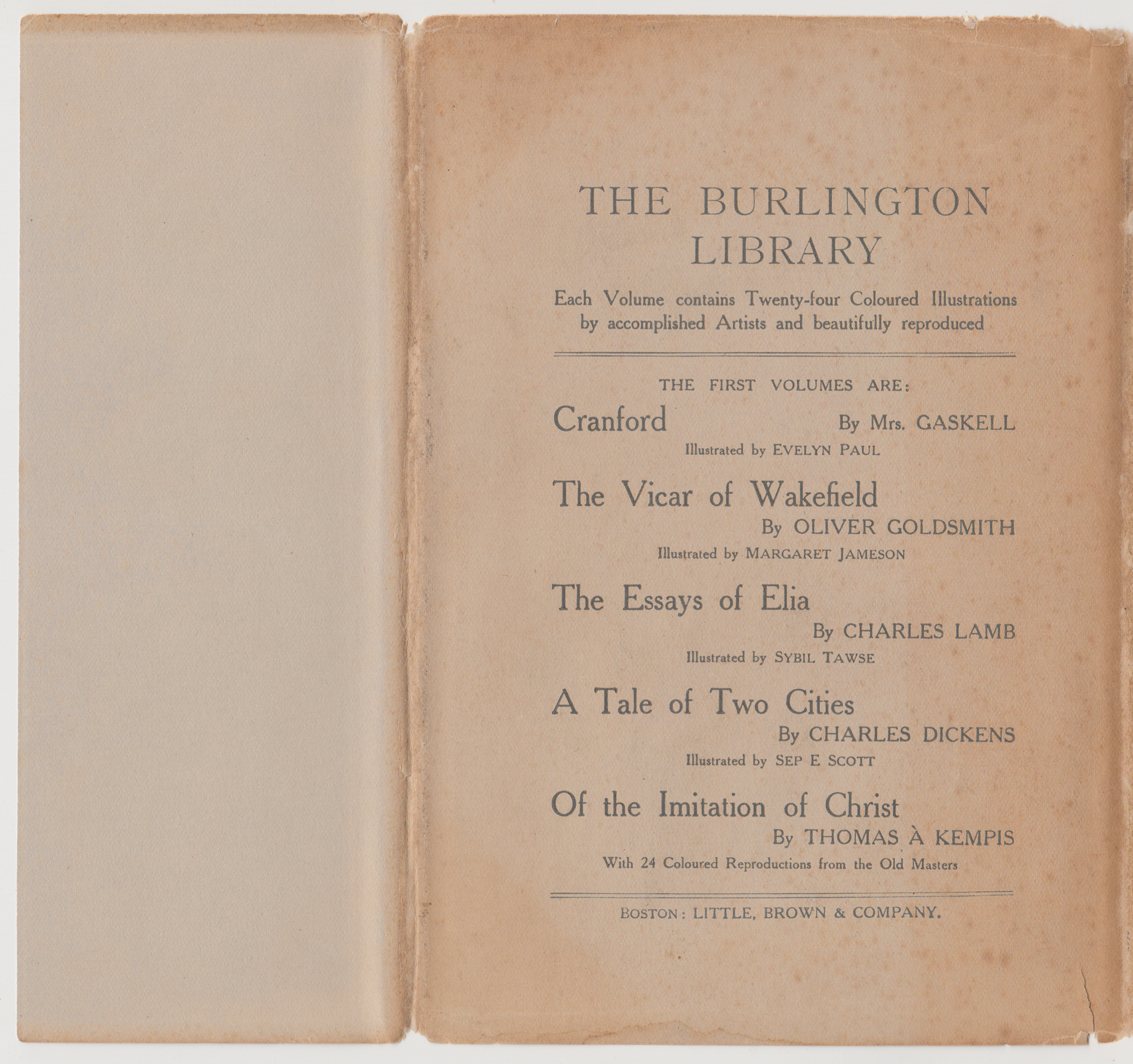
The binding for The Vicar of Wakefield is blue cloth with gold and grey typography and decorations. The top stain is gold. Arts & Crafts inspired design lends a flavor of upscale book-binding to these inexpensive books.
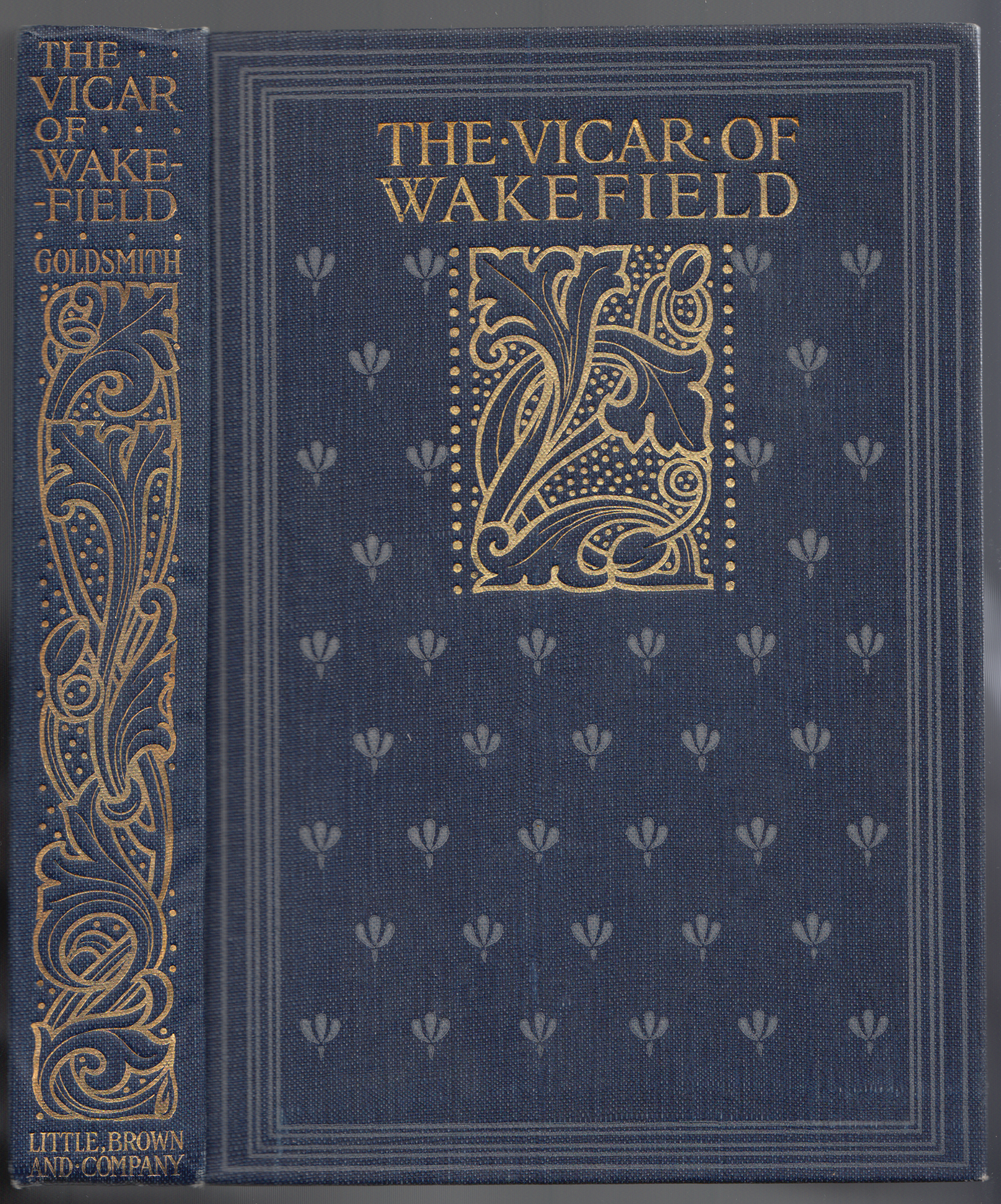
The illustrated endpapers:
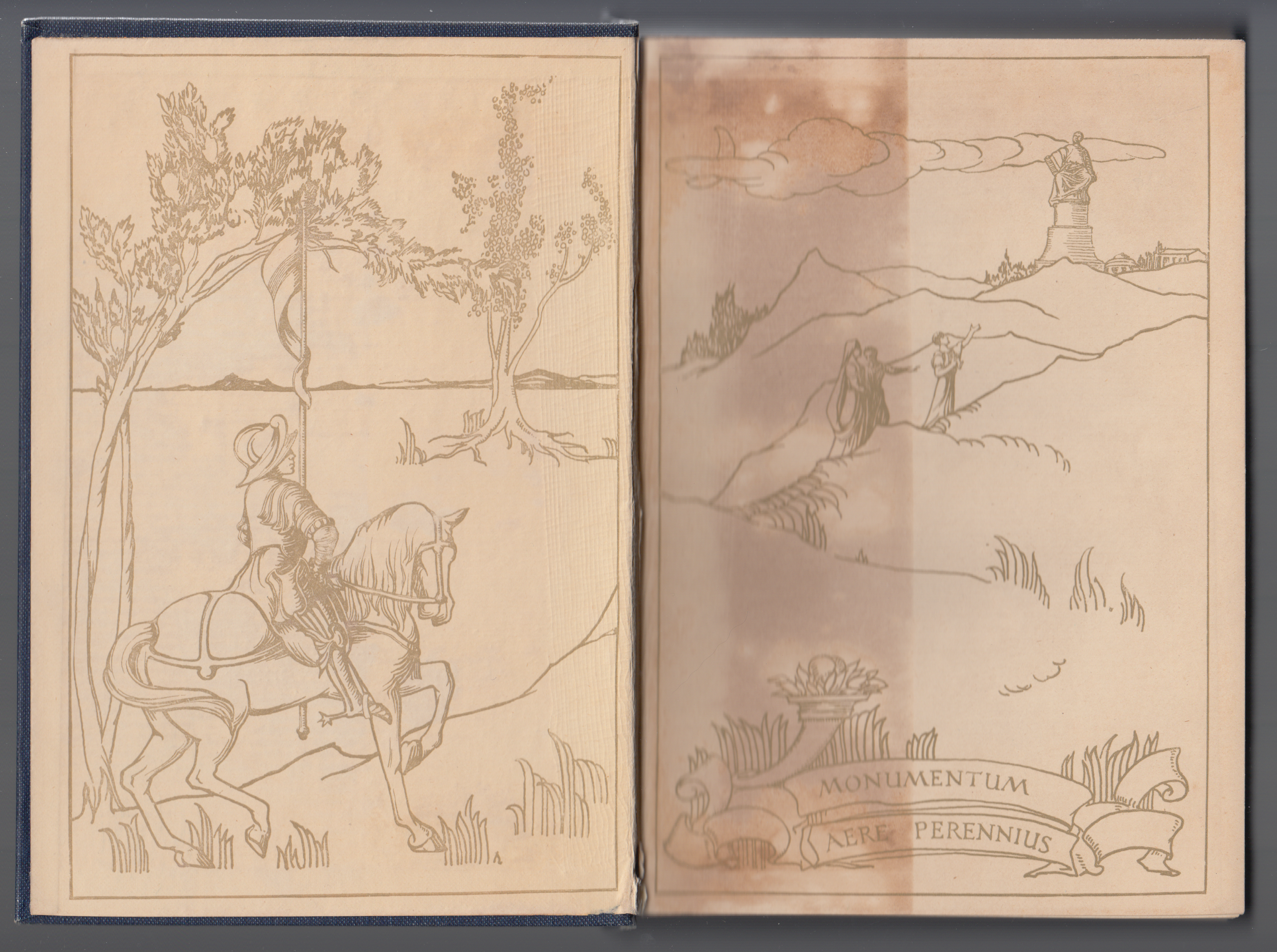
The half-title page includes the series name.
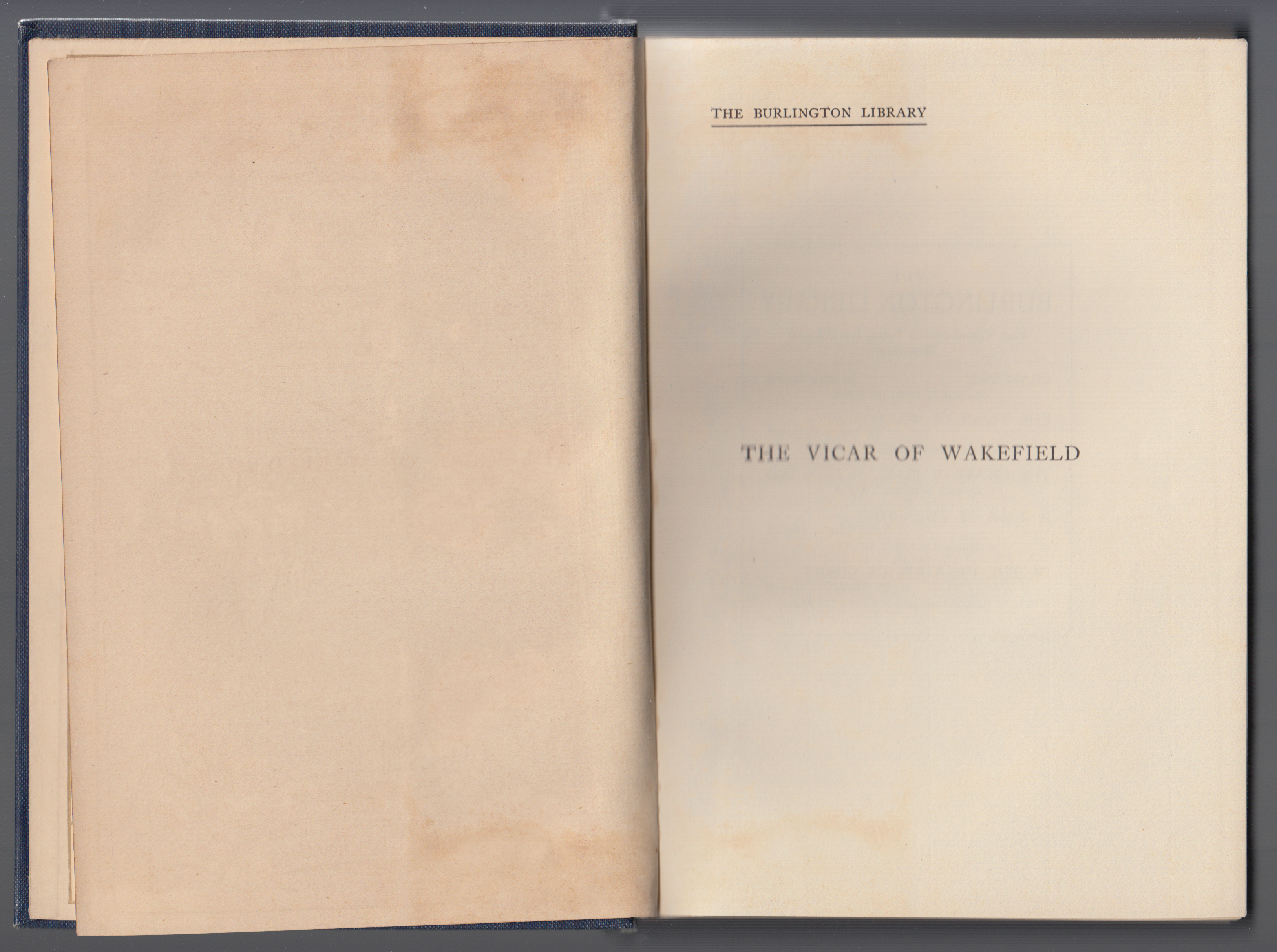
A list of titles in the series follows the half-title page.
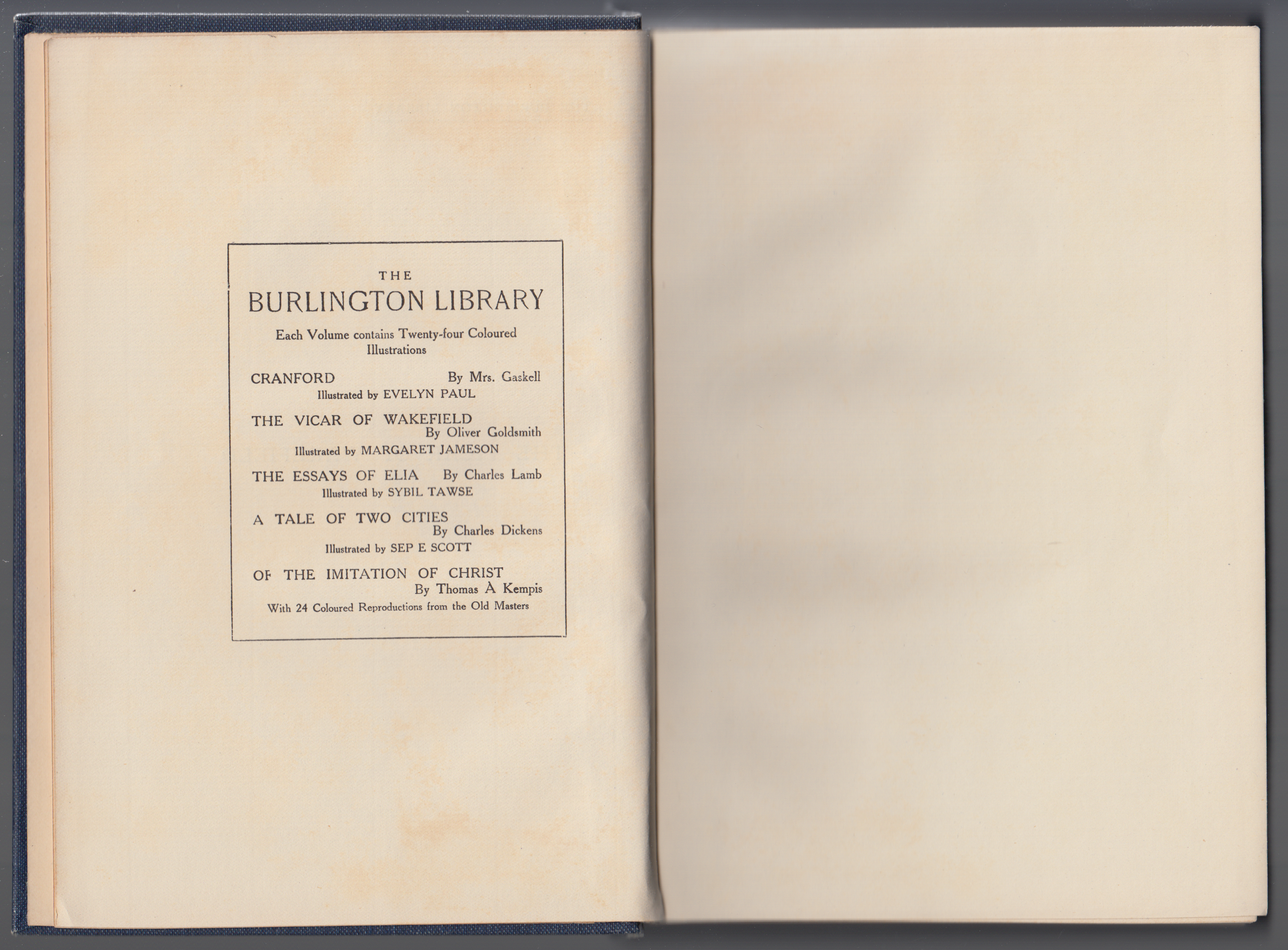
A color illustration, tipped in, faces the title page, from which it is separated by a leaf of tissue.

The title page with the title, author, and illustrator.
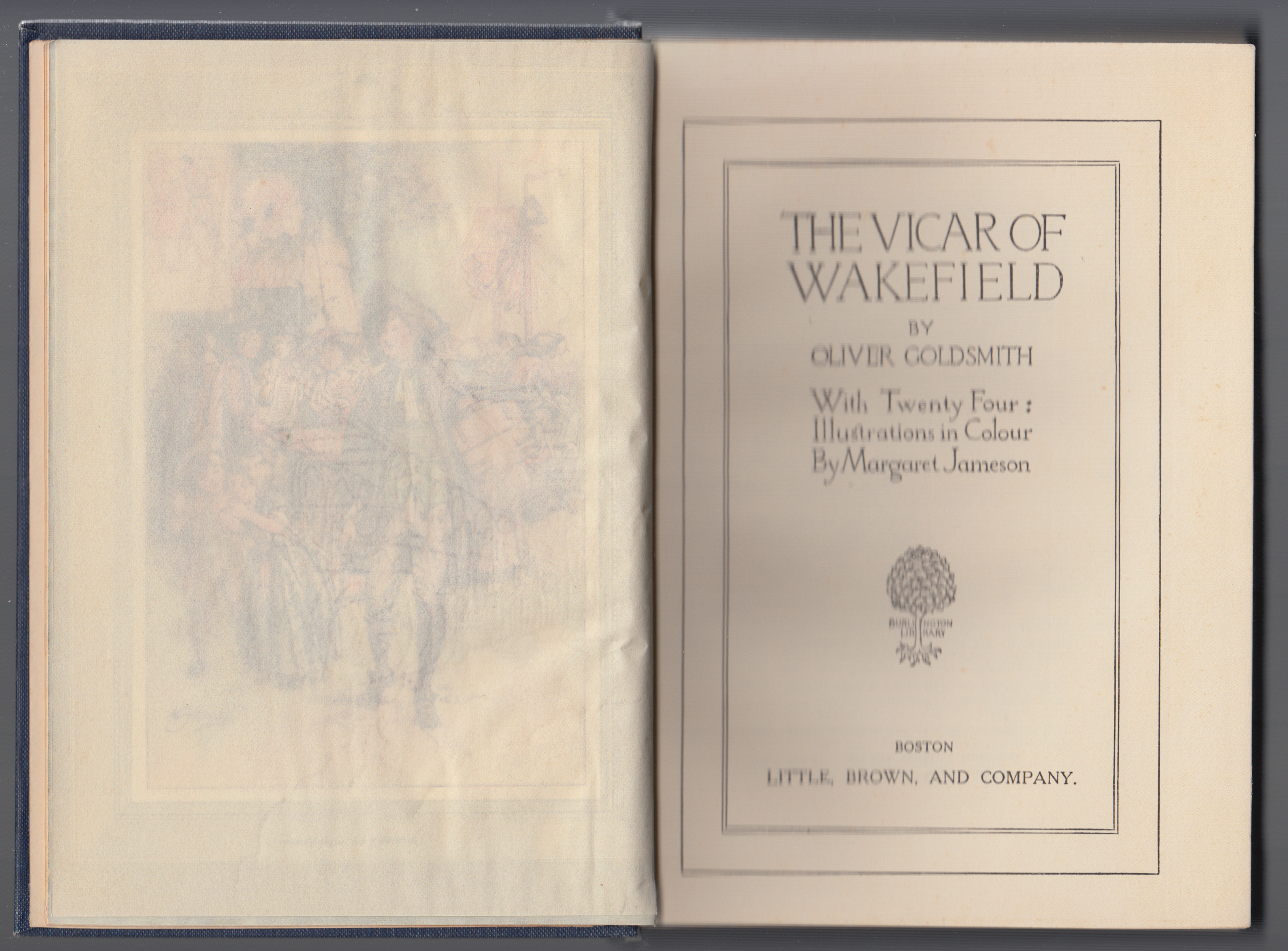
This book was printed by the Press Printers, Limited. 69-76 Long Acre, London, W.C.
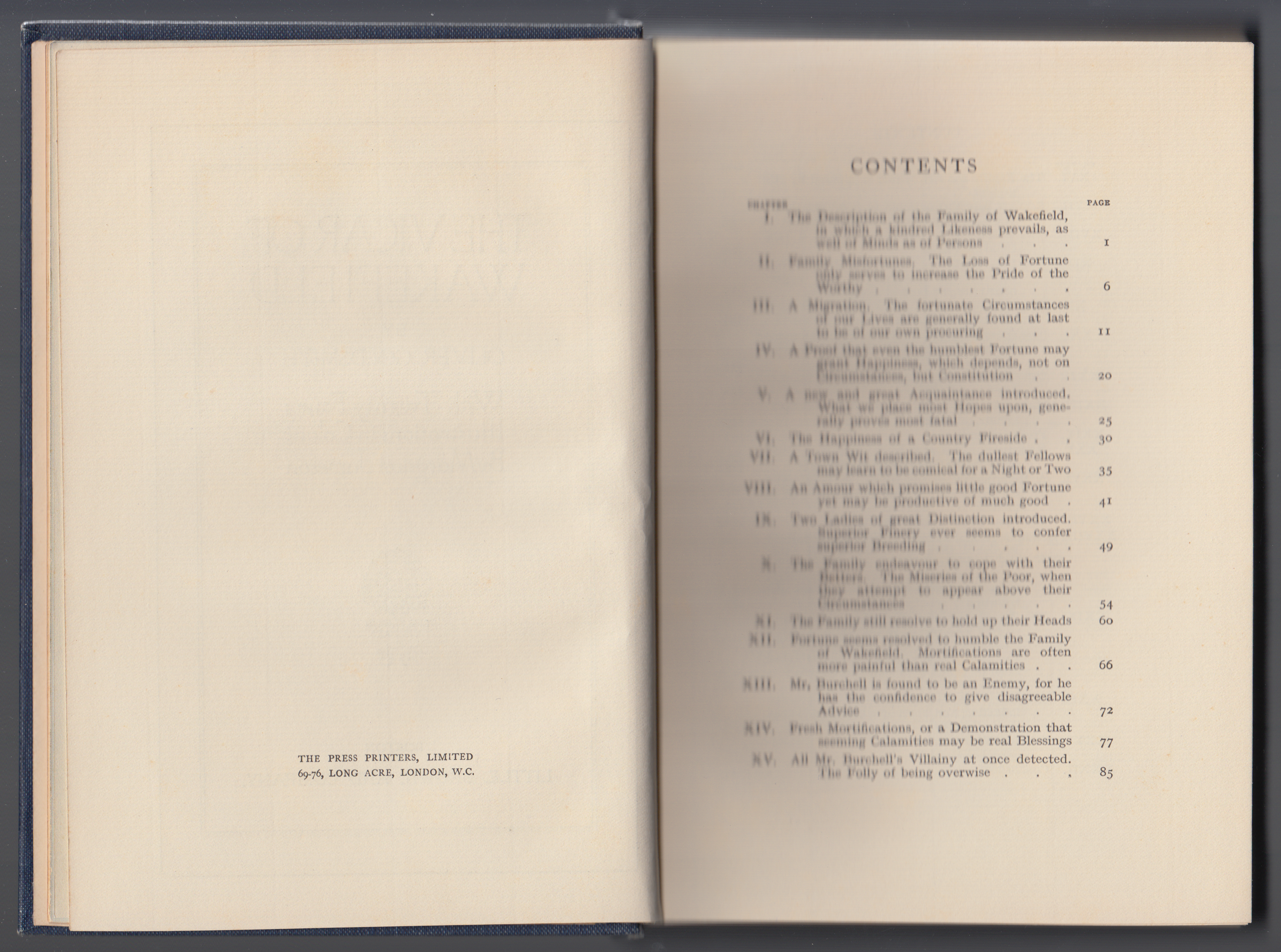
The printer information is also included at the back of the book:
